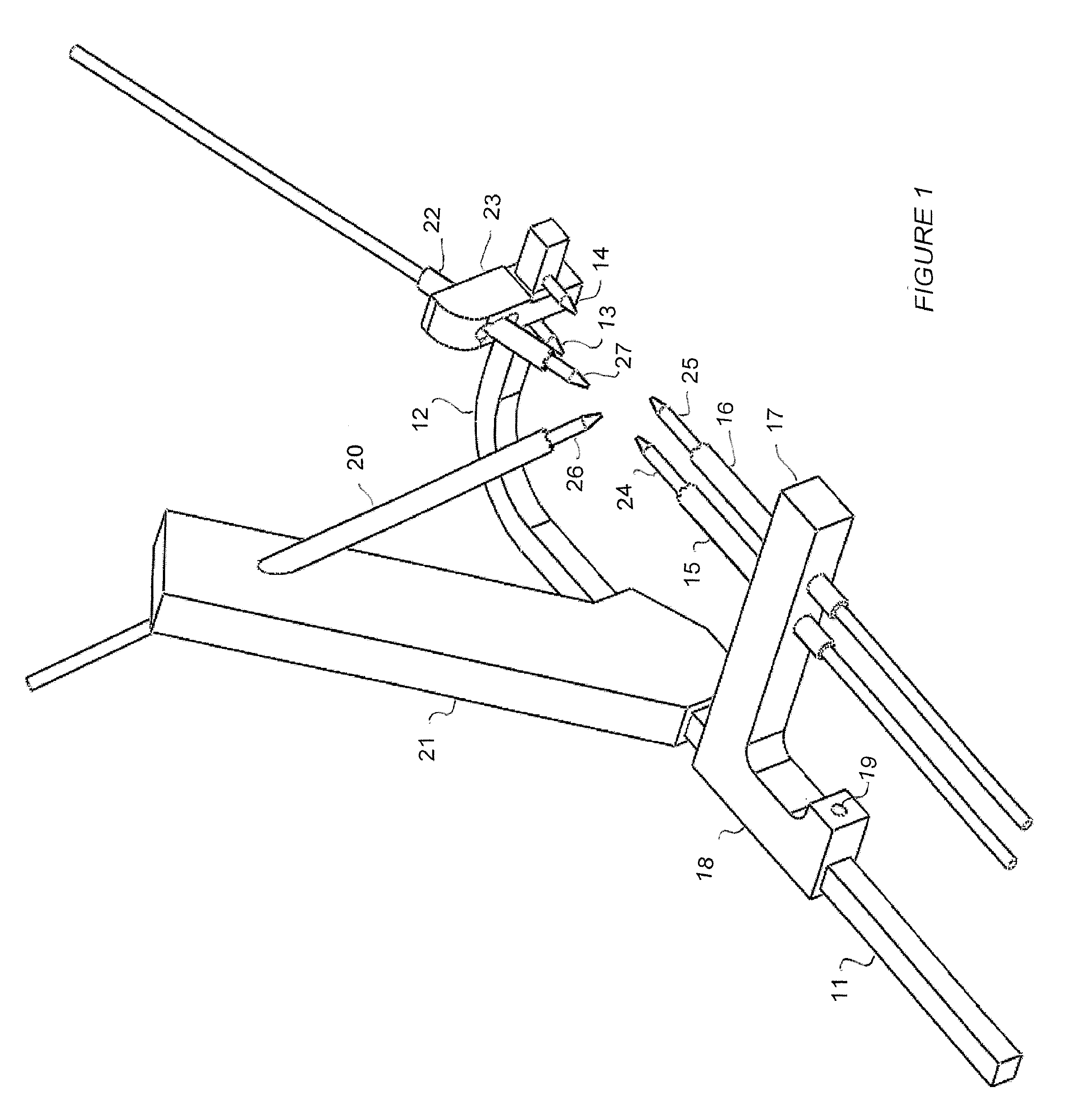Tibiotalar arthrodesis guide
- Summary
- Abstract
- Description
- Claims
- Application Information
AI Technical Summary
Benefits of technology
Problems solved by technology
Method used
Image
Examples
Embodiment Construction
[0024]The TAG device is comprised of several basic components. The main component is a straight guide post upon which other components can slide. A curved arm at the end of the straight guide post features points at the ends which serve as indicators of the pins' exit sites based upon the lines of action of the parallel guide cylinders. The parallel guide cylinders are positioned on a movable arm which translates superiorly and inferiorly on the guide post of the handle, allowing a surgeon to adjust the device for varying ankle sizes. In the preferred embodiment, the TAG device has both “home-run” and medial guide pins, allowing the surgeon to choose one or the other. The success of the “home-run” pin or the medial pin is determined by its orientation with respect to the two parallel guide pins. The “home-run” pin guide cylinder is oriented superiorly and at an angle to the parallel guide cylinders to ideally position the “home-run” pin through the body of the talus into the talar n...
PUM
 Login to View More
Login to View More Abstract
Description
Claims
Application Information
 Login to View More
Login to View More - R&D
- Intellectual Property
- Life Sciences
- Materials
- Tech Scout
- Unparalleled Data Quality
- Higher Quality Content
- 60% Fewer Hallucinations
Browse by: Latest US Patents, China's latest patents, Technical Efficacy Thesaurus, Application Domain, Technology Topic, Popular Technical Reports.
© 2025 PatSnap. All rights reserved.Legal|Privacy policy|Modern Slavery Act Transparency Statement|Sitemap|About US| Contact US: help@patsnap.com



